First, there is my absolute favourite, the one I really really do not want to be without and hence embarrassingly keep spending money on new plants, even though they should self-seed generously: Campanula persicifolia, the peach-leaved bellflower. As you will have guessed, I do not have a good spot for them and hence they do not self-seed – or, more precisely, the seedlings don’t stand a chance of coming up in my thicket of a “border” (they do self-seed in random pots nearby and the children’s sandpit though).
Also, I keep thinking of them as light woodland plants, their delicate graceful spires ravishingly beautiful in dappled shade, so keep planting them in the mostly shady beds around the terrace when in fact they love a fair bit of light. They do tolerate shade, but not to the extend I subject them to. So, rather than thrive, they grow weaker by the year, overshadowed and muscled out by their stronger neighbours. (That’s a constant theme on an epic scale in my garden, I’m afraid, as everything is far too densely planted – did I mention I’m a plant maniac in general, not just regarding campanulas?)
There may be a second reason why they grow weaker though: I simply exhaust them. As their flowering period is fairly fleeting and (as said before) campanulas do not wilt well aesthetically, I tend to pinch off spent blooms with fingernails or the above mentioned nail scissors. I know. Too much time or worse… This does have an advantage though: rather than setting seed and spending its energy to ripen it, the plant keeps producing more and more blooms from its axils. You can thus keep it going until late autumn if you so wish – but it comes at a price.
However, to set off the National Collection of Old-fashioned roses there, they also deploy a similar but stiffer and coarser looking bellflower: Campanula latiloba. There are lovely varieties such as ‘Highcliff’ and ‘Hidcote Amethyst’ – the former being darker, deeper in colour. I so far could just about refrain from buying those, thinking of my experience with other big border types, and hence can’t speak from own experience here. In general, however, this campanula has stronger upright spires with more starry, open flowers that do not have any individual stalks to speak of and thus do not “hang” but sit tightly on the main flower stem, making it appear like a huge ice-lolly.
This and the fact that Campanula latiloba grows in clumps (thus making a bigger splash of colour in one go) seems to predestine them for being used much like foxgloves or delphiniums: the knights with upright lances, standing guard over the queen of flowers. Although, it must be said, there are more of a gnomic type of guard when compared to the noble delphinium…
Certainly no gnome and – given the right care – just as tall as any delphinium however is Campanula pyramidalis. It also goes by the name of Chimney Bellflower since it used to be grown in pots and taken in for its flowering period in July and/ or August (so generally later than the previous two) to grace the then cold and empty chimney breasts.
I first came upon it thus displayed inside the twilight of the Great Hall in Great Dixter, the home of the late Christopher Lloyd, and was blown away: Three metres of purple-blue glowing stars stacked in – the clue is in the name – a tall, slender pyramid. One of those statement plants with a definite wow-effect! I had to have it! And I have had it ever since. I switched from the purple to the white version though, because the campanula-“blue” jarred so badly with the pots of true blue agapanthus blooming beside it. The white ones look magnificent though.
That, however, seems to have been the reason the late Christopher Lloyd did NOT like them much outdoors: according to the excellent book on campanulas by Lewis and Lynch I already quoted last week, he wrote: "The reason they are unsuccessful in the garden is because the bees pollinate their flowers, and these then fade in a matter of three days instead of three weeks."
If you did want to grow them for indoors, Lewis & Lynch quote a Victorian reference that claims to produce flower stems up to five metres (16 feet) tall. Be warned though – they had enough time and personnel then to seriously fuzz over plants… Or, you could just take your 1.5 metres tall plant in a pot inside the minute the first flower opens and enjoy it as it is!
I accidentally discovered another “use” for them last year. I had transplanted one seedling into my shady border, just to give it a try. A flower stalk grew – albeit only reaching height in November. I was disappointed, of course, for due to the temperature or short days in didn’t open any blooms and I thought winter would kill it off. Curious however, I let it stay – either for nature to take its course or perhaps it would get through somehow anyway. It did.
However, either because of stronger winds or in search of light it keeled over and grew all horizontally rather than upright. Not heaving the heart to kill it off now after it had made it through winter so bravely I still left it in place, despite the pitiful sight. And then the most extraordinary thing happened. At least extraordinary to my unsuspecting mind: From almost every node it grew a new, albeit shorter flower stalk! There must have been 15 to twenty of them – it looked like a slightly out of place white picket-fence when finally they were in full bloom! Which just goes to show that a) you shouldn’t be too tidy minded because b) nature more often than not will seriously surprise you and turn something bad into good.
And here endeth the sermon. Not least because I have to be on the school run soon and this post is long enough already. But, as I have even more campanula species in my garden, I will write a third time about them next week. Now, don’t be struck down with enthusiasm! - - - What? Those spasms and convulsions were of horror rather than joy? Steady on. Readers to my blog so far can be counted on one hand – they have been warned now and can abstain next week. And if you happened to chance upon this sometime later, you can simply NOT click the next post J!
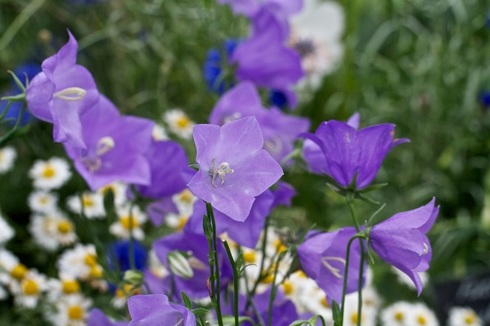
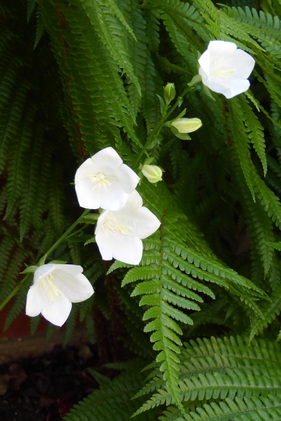
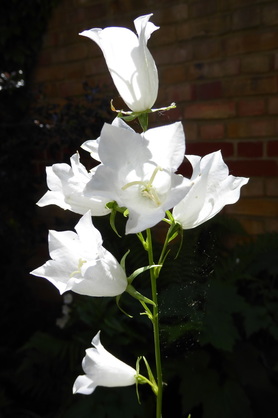
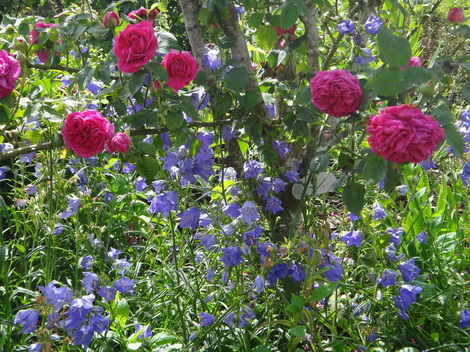
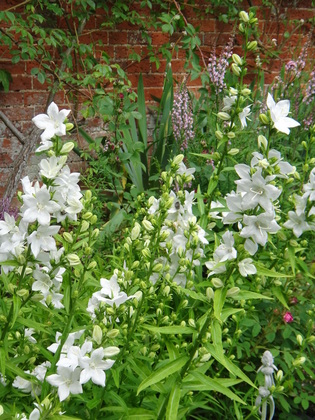


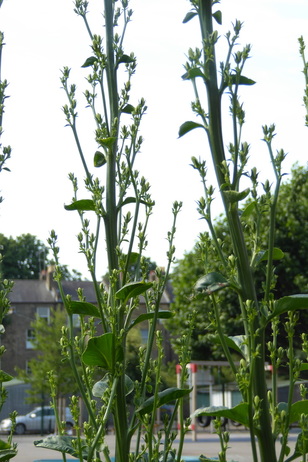
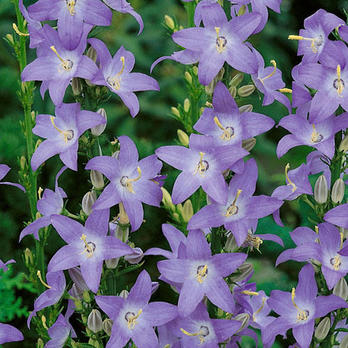
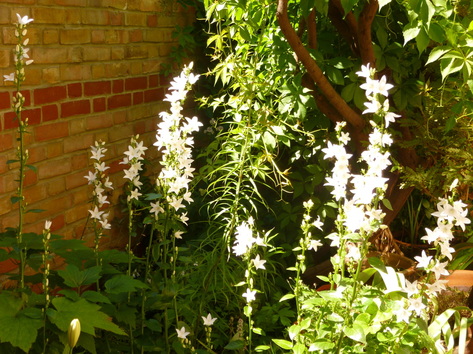
 RSS Feed
RSS Feed